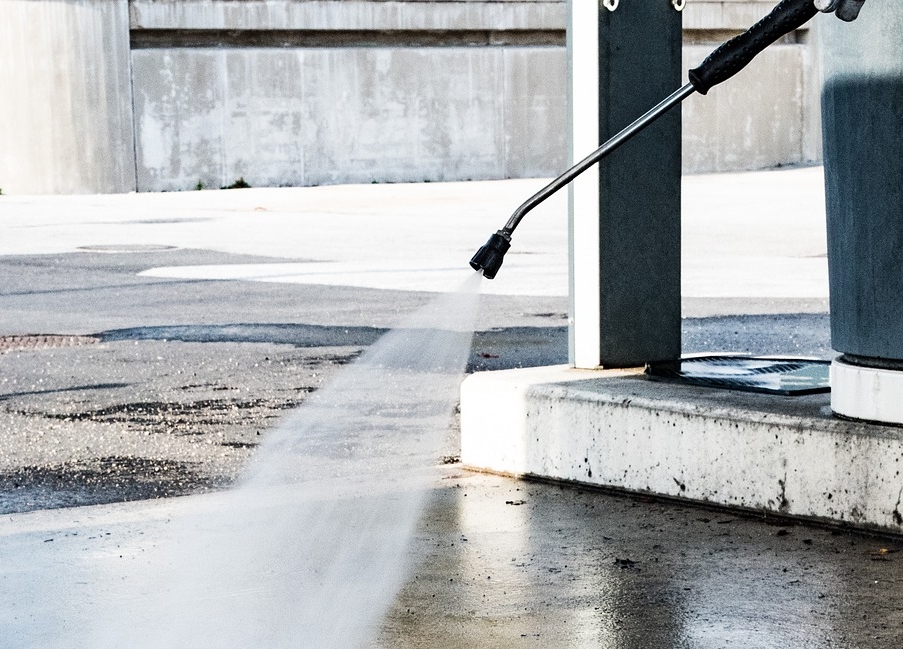Taking into account the climate and air pollution, washing of facades and external glazing should be carried out at least twice a year – this frequency ensures a decent look for the objects.
By entrusting the regular cleaning of windows and facades to a professional company, you can be sure that the building you control will look like new, attract customers and maintain profitability.
The cost of cleaning windows and facades of each house, building and structure is calculated individually. The exact price can be found during a preliminary consultation with managers.
The price of washing the facade depends on:
- height and area of facades;
- complexity of the relief of the facade (stucco molding, volumetric masonry, etc.);
- facade glazing area;
- the complexity of glazing (the presence of stained-glass windows, gratings, decorative impost, etc.);
- resistance of facade pollution;
- necessary washing methods (manual, use of AED).
The standard cleaning package can be supplemented depending on the needs of the client and the condition of the facade. Follow the link you can find actual prices of power washing in Vernon Hills, Libertyville, Mundelein, Lincolnshire (IL) https://windowwashingexpert.com/power-washing/pressure-washing-libertyville/.
In addition to regular cleaning, facade washing is required for buildings immediately after construction or repair. The scope of work in this case will be slightly different, since first of all it is necessary to remove construction pollution: mounting foam, cement drops, plasters, grouts.
Popular facade washing methods
High pressure washer or pressure washing
The pressure washer is a high pressure unit; special equipment that supplies water mixed with detergent under pressure. Directed powerful jet knocks down dirt from the surface even without pre-soaking. The advantage of the method is the safety of washing for finishing.
Washing with a telescopic rod
Large glass and smooth surfaces are washed using a telescopic rod, which ends with a brush, scraper, washing “fur coat” or squeegee to remove water.
The use of a long rod eliminates the need to use stepladders and ladders, which is considered unsafe when working with soap solutions that increase slip.
Hand washing
Stubborn dirt, hard-to-reach places or small areas are washed by hand with water, detergents and brushes. A seemingly simple task requires experience and responsibility from the washer – it is important to work carefully and with a thorough pre-soak so as not to damage the finish.
Which items need to be washed the most?
- low-rise and high-rise residential buildings (new buildings, secondary housing and old housing stock);
- buildings with complex architectural forms;
- office buildings, business and business centers;
- showcases of commercial facilities;
- buildings with glass facades;
- shopping and entertainment complexes;
- public and administrative buildings;
- industrial buildings and structures;
- facades marred by graffiti.
Features of the facade washing
Objects up to 15 meters high are washed from the ground, scaffolding or aerial platform – this is an easy way to wash and with minimal labor. To wash the facades of buildings above 15 meters, industrial climbers are involved – in this case, lifting and safety equipment is delivered to the facility.

On average, work on small objects takes 2-5 hours, on large ones – from 10 hours.
Employees of the professional power washing company windowwashingexpert.com involved in the cleaning of windows and facades undergo preliminary safety training for themselves and others (residents, facility employees, pedestrians). All climbers have a certificate and permission to wash facades at height.
How often should the facade be washed?
Even in the case of heavily polluted buildings, there is no need to wash the facade every year. It is usually sufficient to do this every 3 or 5 years. In the case of dark facades, this period can be easily extended to 10 years. This is best done in the summer, after the flowering season. To clean the facade, choose a period in warm and dry weather so that the plaster can dry unhindered.
Primary washing of the facade with a high pressure washer
Most of the surface dirt on the facade of the house can be removed with plain water. Unfortunately, pouring plaster with a garden hose will not bring the expected results. You need a pressure washer that provides a constant pressure of 120 bar or more. High pressure will easily wash away dust and sand from the facade.
Use the turbo nozzle to wash the facade of the house. This is the one that generates the characteristic swirling flow of water. The turbo nozzle increases not only the power of the water hammer, but also, in a sense, the width of the jet. By aiming the pressure washer from the right distance, you can wash a strip of about 8-10 cm wide at a time. A flat wide nozzle, used mainly for washing a car, performs the same function, but does not provide such strong pressure.
Wash the facade of the house from top to bottom so that the flowing dirt does not leave streaks on the washed plaster. In the case of tall buildings, access to the upper parts of the facade can be difficult, so it is worth preparing scaffolding. Washing the facade from the ladder under high pressure is dangerous. Attention! If the plaster is cracked or peeled off along with the mesh, pressurized water can cause the facade to peel off.

